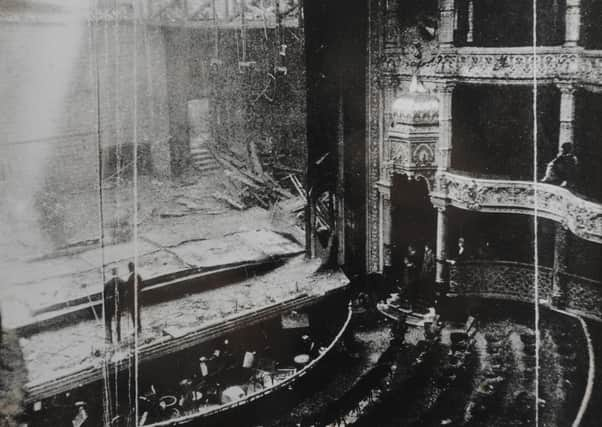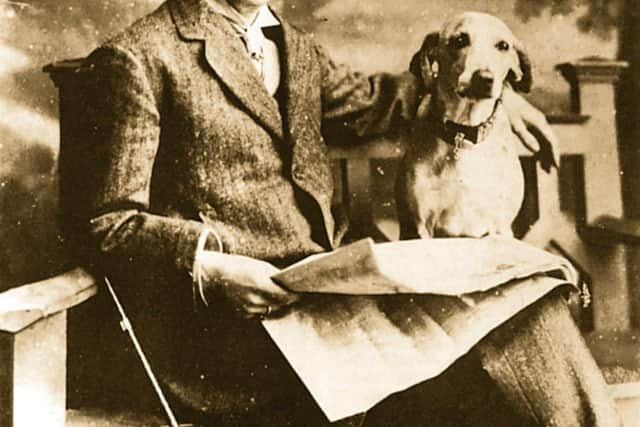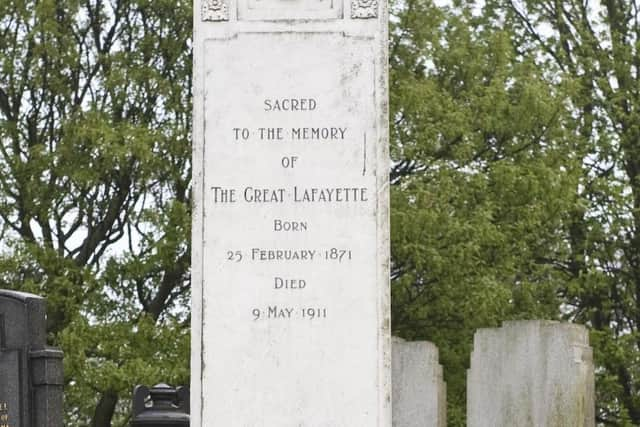The bizarre tale of the theatre blaze which killed The Great Lafayette - twice


The legacy of that conflagration in what is now the Festival Theatre, is witnessed by every theatre-goer every time they attend a show to this day, but more of that later.
It was on May 9, 1911 that Sigmund Neuberger, famed throughout the world as The Great Lafayette, took to the stage of the Nicolson Street venue to perform the illusion his 3,000 strong audience had been awaiting with bated breath.
Advertisement
Hide AdAdvertisement
Hide AdThe Lion’s Bride was to be the spectacular finale of what had already been a jaw-dropping evening of magic and illusion.


It told the story of Princess Pari Banu who, having survived a shipwreck, is forced to join the harem of the monarch Alep Arslan.
The illusion climaxed with the Princess entering a cage with a real lion, which would leap towards her, only to have its head dramatically torn away to reveal The Great Lafayette himself.
The act had been performed many times before and should have gone without a hitch, but on this occasion, an electrical spark, high above the stage, would bring the show to a tragic conclusion.
Thinking the flames were just another special effect, the audience were unaware of the horror unfolding, as were those on stage.


It’s an episode of Edinburgh’s theatrical history that has long fascinated writer Gordon Rutter, founder of the Edinburgh Fortean Society.
“I like magic plus it was an interesting story and there was a mystery,” he explains.
“This man had died in a fire and there was some confusion about his body; that was pretty much the story most people who had heard of him knew.
Advertisement
Hide AdAdvertisement
Hide Ad“But before the tragedy, he had lived a life, I wondered what that life entailed?
“Why was he so big and why now largely forgotten other than for the nature of his death?”
Neuberger died when, having already escaped the flames, he returned to rescue his horse.
He was never seen alive again.
“The fire was started by a faulty electrical light, setting fire to part of the elaborate scenery used in what was his signature piece,” reflects Gordon.
“When they attempted to lower the fire curtain it jammed three feet from the bottom. This sucked air in via the chimney effect, which fed the fire and made it worse.
“However, the curtain still served its purpose. The only fatalities were on the stage and backstage.”
He continues: “When the fire started it wasn’t until the band started playing the national anthem that people realised something was wrong, initially they thought it was part of the elaborate staging.
“The quick thinking of the band no doubt helped get people out and saved lives.”
Advertisement
Hide AdAdvertisement
Hide AdBehind the jammed safety curtain 11 members of the company died, including Neuberger.
“One member of the crew, from his body position, had been running upstairs to the dressing room when he was overcome by the fire.
“He had been trying to rescue fellow cast members including children,” reveals Rutter, co-author of the book The Death and Life of The Great Lafayette, published in 2011 to mark the centenary of his death.
“My co-author Ian Robertson and I have continued researching the story and we have amassed so much extra information we are intending to bring out an updated edition,” he says.
“I’ve even managed to get hold of copies of the patents of how he performed some of his magic effects.”
Those magic effects earned The Great Lafayette the equivalent of £4 million a year in today’s money.
Even in death, mystery courted Neuberger thanks to one, final, unintentional illusion.
Gordon explains: “The Great Lafayette’s body was found and taken through to Glasgow and cremated.
Advertisement
Hide AdAdvertisement
Hide Ad“He was due to be interred in Piershill Cemetery between the embalmed paws of his beloved dog, Beauty, a gift from Harry Houdini.
“Two days before the burial, work was still going on at the Palace Empire Theatre and as it did they found The Great Lafayette’s body. Again.
“This one, however, was different, it bore the elaborate jewels and rings for which he was noted.
“Something that had been missing from the previous body, a fact his manager had noted, suspecting someone had stolen the expensive items from the body.”
The second find turned out to indeed be the real Lafayette.
The first to be discovered was revealed to be the body of his band leader who was also used as a body double.
Gordon adds: “When The Great Lafayette was finally buried, 250,000 people came out to watch his funeral procession.”
One result of the tragedy, saw a change in the law that will be familiar to anyone who has ever sat through a performance in any theatre in the land, the Lafayette Bill.
“The Lafayette Bill brought in the lowering and raising of the safety curtain at every performance to ensure it is fully working and will do its job in the event of an incident.”
Comments
Want to join the conversation? Please or to comment on this article.